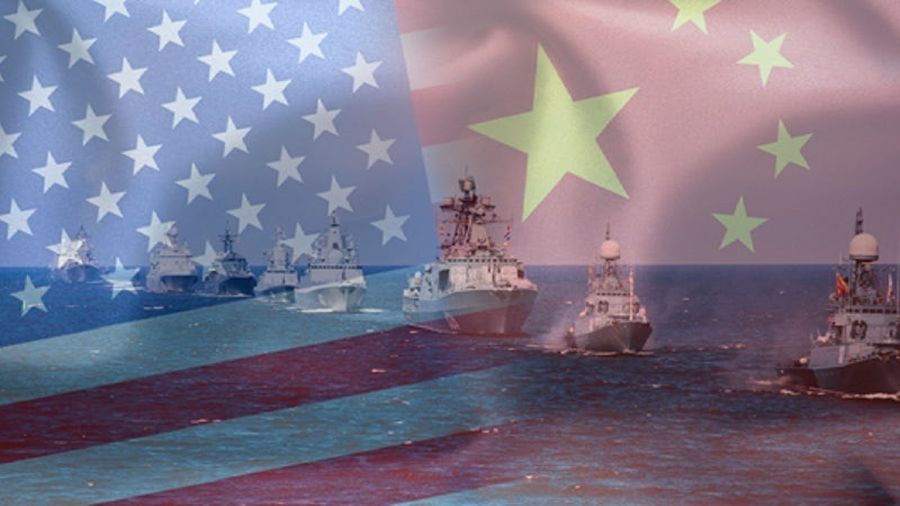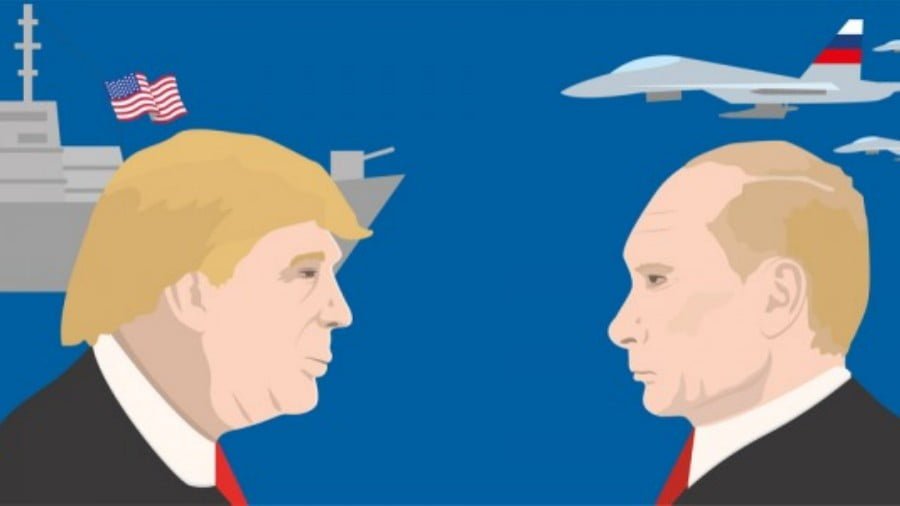The Emerging Military-Strategic Dynamics of the New Cold War in the Asia-Pacific
The Chinese leadership feels like they’re being led into a trap after it’s become obvious that the US is provoking them into militarily acting on the emerging security dilemma over Taiwan before they’re ready. The “politically inconvenient” truth is that China is more strategically vulnerable right now than it’s been in decades, hence why it’s decided to urgently buy time to recalibrate its multi-year plans by seriously exploring the parameters of a New Détente with the US.
The Golden Billion vs. The Global South
The New Cold War between the US-led West’s Golden Billion and the jointly BRICS– & SCO-led Global South over the direction of the global systemic transition is actively unfolding in the Asia-Pacific. This region is the most populous in the world and also the epicenter of globalization processes, thus making it the most important battleground in this global competition between those two de facto blocs. Accordingly, its emerging military-strategic dynamics should be of interest to all.
The Post Mortem Of China’s Derailed Superpower Plans
The US prioritized containing Russia via the ongoing NATO-led proxy war that it provoked in Ukraine since it regarded that Eurasian Great Power as comparatively weaker than China, believing that Moscow’s supposedly inevitable strategic capitulation will facilitate Washington’s plans against Beijing. The stalemate that’s setting in along the Line of Control (LOC) there will result in Russia’s strategic victory with time, however, hence why the US pushed forward its anti-Chinese plans in early August.
Pelosi’s provocative trip to Taiwan coincided with Biden’s signing of the CHIPS Act, the first of which signaled the resumption of the US’ military-driven “Pivot to Asia” that was temporarily suspended due to Russia’s special operation while the second represented a major escalation in the “tech race”. Since then, AUKUS began merging with the US’ regional treaty allies like Japan alongside EU-centric NATO while the Indo-Pacific Economic Framework’s new roadmap strengthened the US’ economic standing.
These newfound regional military-economic pressures contributed to the unexpected systemic challenges unleashed by the Ukrainian Conflict to risk derailing China’s speculative superpower trajectory. In response, China’s new leadership that assumed office after last month’s 20th National Congress began exploring the parameters of a New Détente with the US in an attempt to temporarily relieve some of the aforementioned pressure while buying time to recalibrate their multi-year plans.
The Path To An American-Chinese New Détente
This was precisely what globally renowned China expert Henry Kissinger forecast would happen, though it remains unclear whether such a pragmatic balance of interests will ultimately be reached between these two superpowers in order to uphold the fading bi-multipolar system in which they have shared stakes. That intermediate phase of the global systemic transition is quickly evolving towards tripolarity ahead of its final form of complex multipolarity (“multiplexity”) due to India’s masterful balancing act.
This rising Great Power has proven itself capable of pragmatically multi-aligning between the Golden Billion and the Global South of which it’s a part to become the kingmaker in the New Cold War, the role of which is nowadays recognized even by the US’ media and state representatives despite prior denials. The resultant interplay between the US, China, Russia, and India – the four most globally significant players in the systemic transition – intriguingly creates the basis for pushing the New Détente forward.
To that end, the Chinese Defense Minister just held talks with his American counterpart in Cambodia despite having previously suspended military-to-military engagement in the aftermath of Pelosi’s provocative trip in August. US Secretary of State Blinken also plans to visit Beijing early next year to build upon the political progress achieved in thawing tensions between these two superpowers following their leaders’ first in-person meeting during last week’s G20 in Indonesia.
Regional Military-Strategic Recalibrations
On the topic of that geostrategically positioned ASEAN leader, its Defense Minister just reaffirmed its principled neutrality in the New Cold War, thus reducing the chances (at least for now) that it would passively facilitate the US’ Australian-based military-driven anti-Chinese containment plans. That’ll help further soothe tensions between the American and Chinese superpowers as they continue exploring the parameters of a New Détente.
Nevertheless, nobody should expect the US to unilaterally concede on what it subjectively regards as being in its national interest. Military pressure will still continue to be exerted on the People’s Republic as evidenced by Vice President Harris’ trip to the Philippines, which was widely interpreted as reaffirming America’s mutual defense commitment to its treaty ally amidst its heated territorial dispute with China over the South China Sea.
Speaking of treaty allies, they’re all expected to become the core of a US-led NATO-like regional military alliance centered on AUKUS, even if such isn’t ever officially declared nor all members end up with equal mutual defense commitments to one another. The purpose of this platform will be to keep China’s superpower rise in check irrespective of whether progress is achieved on reaching a New Détente. In practice, this will see Australia, Japan, the Philippines, South Korea, and Thailand playing leading roles.
The “New Normal”
The original NATO’s gradual expansion to the Asia-Pacific will complement its emerging counterpart’s military capabilities and overall potential, thus serving to maximize America’s containment of China. While it remains unclear what role Taiwan will play in this US-led framework, it’s possible that Washington might keep it somewhat comparatively at arm’s length if a New Détente is reached in order to avoid provoking Beijing, though nobody should expect their comprehensive cooperation to end.
The grand strategic challenges that China is facing in its home region (including the systemic ones unleashed by the Ukrainian Conflict that were previously explained in the relevant hyperlink) are therefore expected to worsen and become institutionalized to the point of turning into the “new normal”. The US’ newfound Asia-Pacific AUKUS+ military platform will become the basis upon which its envisaged economic network will be expanded, which will holistically pressure China like never before.
So long as its self-declared “number one red line” of Taiwan isn’t crossed, the People’s Republic is unlikely to commence its own Russian-like special operation in response to this undeniable security dilemma between it and its systemic opponents among the Golden Billion. The reason for this prediction is that China’s grand strategy was completely derailed by the combination of the systemic challenges unleashed by the Ukrainian Conflict and the US’ opportunistic military-economic moves after August.
China’s Pragmatic Response To The US’ Trap
Its leadership, both the prior one before October’s 20th National Congress and those new members that entered into office as a result of that event, feels like they’re being led into a trap after it’s become obvious that the US is provoking them into militarily acting on this security dilemma before they’re ready. The “politically inconvenient” truth is that China is more strategically vulnerable right now than it’s been in decades, hence why it’s decided to urgently buy time to recalibrate its multi-year plans.
This explains why it resumed military-to-military engagement with the US at the Defense Minister level despite suspending such in response to Pelosi’s provocative trip in August even though the US has yet to do anything in return. The same can be said for President Xi’s outreaches to Australia’s new leader even though the latter’s country hasn’t backtracked on any of its unprovoked aggressions against China that were responsible for worsening their relations over the past half-decade.
Where’d All The “Wolf Warriors” Go?
To be clear, these seemingly unilateral concessions on China’s side are superficial for now and are being carried out for goodwill purposes in order to take discussions on the New Détente to their next level, but they also inadvertently confirm just how strategically vulnerable it is right now that it’s even doing this in the first place. The optics of these moves contrast with the perceptions of Chinese policy that were previously pushed by its so-called “wolf warriors”, who curiously seem to have gone quiet.
Their voices reached a crescendo in early August ahead of Pelosi’s provocative trip but then were quickly silenced after China’s calm and strategically responsible response (or lack thereof). In hindsight, that soft power development suggested that its leadership’s grand strategic calculations had tacitly begun to change for the previously mentioned reasons, hence the need to “tame the wolves” (at least for the time being) while exploring the parameters of a New Détente in order to retain goodwill amidst talks.
This insight suggests that observers can monitor Chinese media for hints about the progress that’s being made behind the scenes on reaching a pragmatic balance of influence between the two superpowers. The continued trend of only mildly critiquing the US, both in general and especially regarding relations with China, and even occasionally praising it would suggest that everything remains on track for the time being as is expected to be the case at least until Blinken’s trip to Beijing in early 2023.
Concluding Thoughts
In the interim, the US will seek to further entrench its military-economic achievements in the Asia-Pacific in order to make them the “new normal”, which would keep China in check irrespective of whether a New Détente is ultimately reached while also functioning as a way of “saving face” if it freezes its already high level of comprehensive cooperation with Taiwan as a “concession” to Beijing. As long as China’s “number one red line” isn’t crossed, this piece’s military-strategic dynamics will remain on track.







